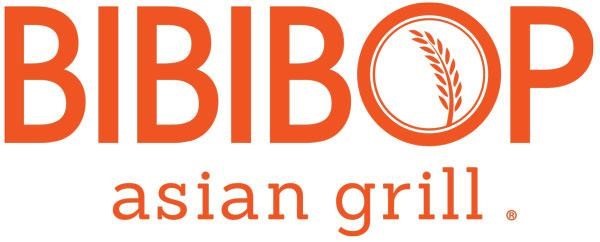

Nutrition facts and Weight Watchers points for Eggs from Bibibop.
Calories
There are 40 calories in Eggs.
Nutrition Facts
| Serving Size | ? | |
| Calories | 40 | |
| Calories From Fat | 25 | |
| Amount Per Serving | % Daily Value* | |
| Total Fat | 2.5g | 4% |
| Saturated Fat | 1g | 5% |
| Trans Fat | 0g | |
| Cholesterol | 105mg | 35% |
| Sodium | 95mg | 4% |
| Total Carbohydrates | 0g | 0% |
| Dietary Fiber | 0g | 0% |
| Sugars | 0g | |
| Protein | 4g | 8% |
| Vitamin A | ? | |
| Vitamin C | ? | |
| Calcium | ? | |
| Iron | ? | |
*All percent daily value figures are based on a 2,000 calorie diet.
Nutritional information source: Bibibop
Allergens
We are working on getting the allergen information for this item.
Ingredients
We are working on getting the ingredients for this item.
Additional Information
Eggs are a versatile and nutritious food that can be enjoyed in a variety of dishes, and Bibibop Eggs are no exception. With their rich flavor and a host of health benefits, these eggs can enhance your dining experience. In this article, we will explore the features, benefits, and drawbacks of Bibibop Eggs, giving you all the information you need to make an informed decision.
Features & Benefits
Bibibop Eggs are made from high quality ingredients and are a delicious addition to any Bibibop meal. These eggs are carefully prepared to ensure their freshness and taste. They are cooked to perfection, with a fried egg option available, adding a delightful texture and flavor to your dish.
Advantages:
- Nutritional value: Bibibop Eggs are a rich source of protein with 4g of protein per serving. Protein is essential for building and repairing tissues, supporting muscle growth, and promoting satiety. These eggs can be a great option for individuals looking to increase their protein intake.
- Essential nutrients: Eggs are packed with essential nutrients, including vitamins and minerals. They are a good source of vitamin A, vitamin D, vitamin B12, and choline. These nutrients play a critical role in supporting overall health, including eye health, bone health, and brain function.
- Versatility: Bibibop Eggs can be enjoyed in a variety of ways. Whether you prefer a fried egg on top of your Bibibop bowl or want to mix them into the ingredients, these eggs add a delicious and satisfying element to your meal. You can also customize your dish by adding a dollop of red chili paste for an extra kick of flavor.
- Balanced macronutrients: Eggs provide a balance of macronutrients, including protein, fat, and carbohydrates. This balance helps keep you feeling full and satisfied, making Bibibop Eggs a good choice for those following a balanced diet.
Disadvantages:
Although Bibibop Eggs have many advantages, it’s important to keep in mind a few considerations:
- Cholesterol Content: Eggs are known to contain cholesterol, and Bibibop Eggs contain 105 mg of cholesterol per serving. While dietary cholesterol has less of an impact on blood cholesterol levels than previously thought, individuals with certain dietary restrictions or health conditions may need to moderate their egg consumption.
- Allergen Information: The specific allergen information for Bibibop Eggs is not provided on the website. If you have any known allergies or dietary restrictions, it’s advisable to inquire about the ingredients and potential cross-contamination risks before consuming Bibibop Eggs.
- Limited information: The website does not provide detailed information about the ingredients or allergens in Bibibop Eggs. This lack of information may make it difficult for individuals with special dietary needs or restrictions to make informed choices.
Conclusion
Bibibop Eggs are a delicious and nutritious addition to your Bibibop meal. They offer a number of benefits, including high protein content, essential nutrients, versatility in preparation, and a balance of macronutrients. However, it’s important to consider factors such as cholesterol content and the lack of detailed allergen information. As with any food, it’s always wise to consult your healthcare provider or a registered dietitian if you have specific dietary concerns or restrictions. Enjoy Bibibop Eggs as part of a balanced and varied diet to enhance your dining experience.
Questions and Answers
Are Bibibop eggs a good source of protein?
Yes, Bibibop Eggs are an excellent source of protein. With 4g of protein per serving, they can contribute to your daily protein intake and support muscle growth and repair.
Are Bibibop Eggs suitable for people with dietary restrictions?
While Bibibop Eggs are generally a nutritious choice, it’s important to note that specific allergen information is not provided on the website. If you have known allergies or dietary restrictions, it’s advisable to inquire further about ingredients and potential cross-contamination risks before consuming Bibibop Eggs.
Can I customize my Bibibop meal with Bibibop Eggs?
Of course you can! Bibibop Eggs can be a delicious addition to any Bibibop meal. Whether you prefer a fried egg on top of your bowl or want to mix them into the ingredients, these eggs will add a delightful flavor and texture to your dish.
Do Bibibop eggs contain cholesterol?
Yes, Bibibop Eggs contain 105 mg of cholesterol per serving. While dietary cholesterol has less of an impact on blood cholesterol levels than previously thought, individuals with certain dietary restrictions or health conditions may need to moderate their egg consumption.
Are there any disadvantages to eating Bibibop eggs?
While Bibibop Eggs offer many benefits, it’s important to consider certain factors. These include the cholesterol content, the lack of detailed allergen information, and the limited ingredient information provided on the website. If you have specific dietary needs or restrictions, it’s a good idea to consult your healthcare provider or a registered dietitian for personalized guidance.